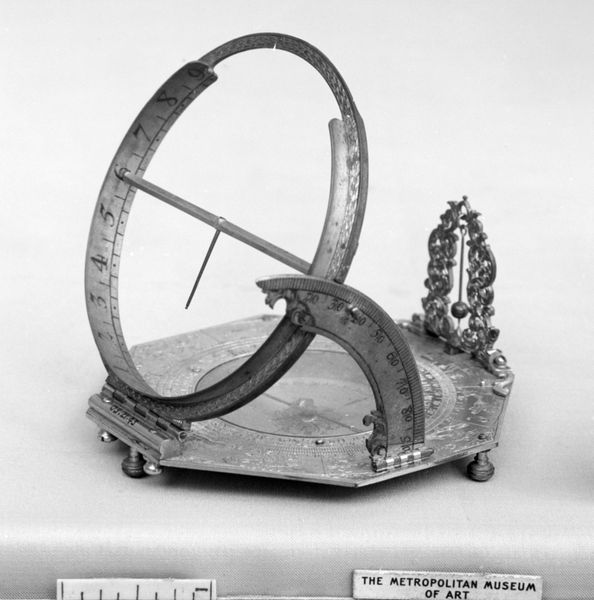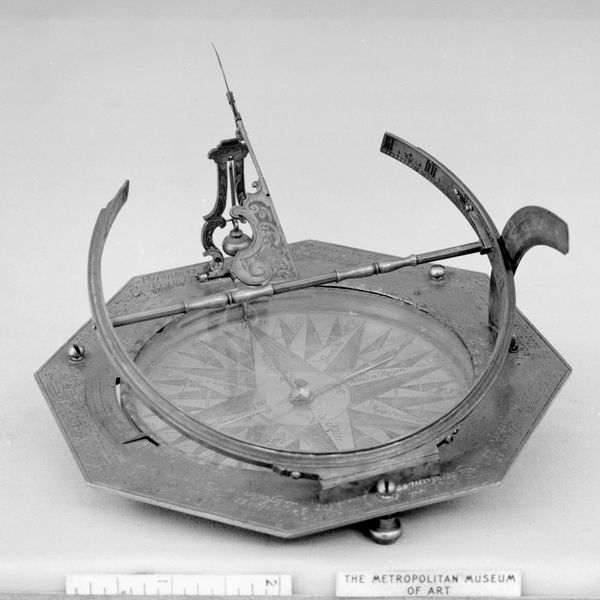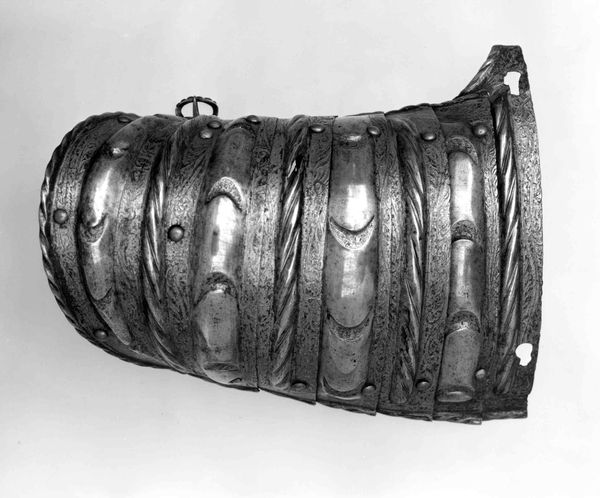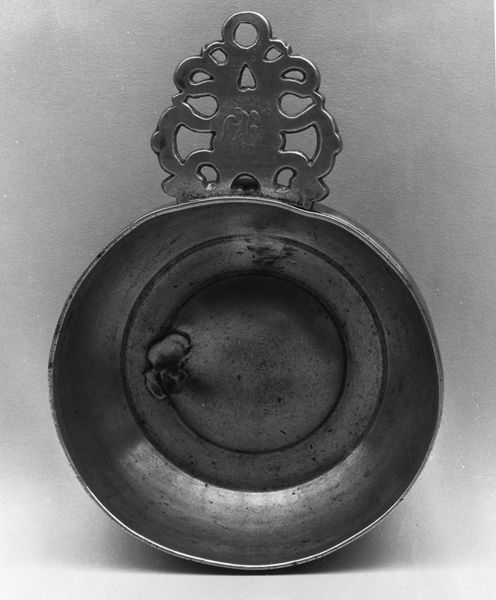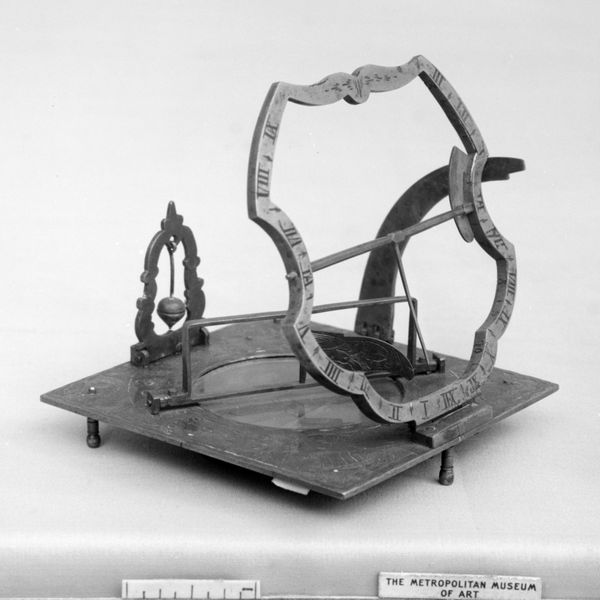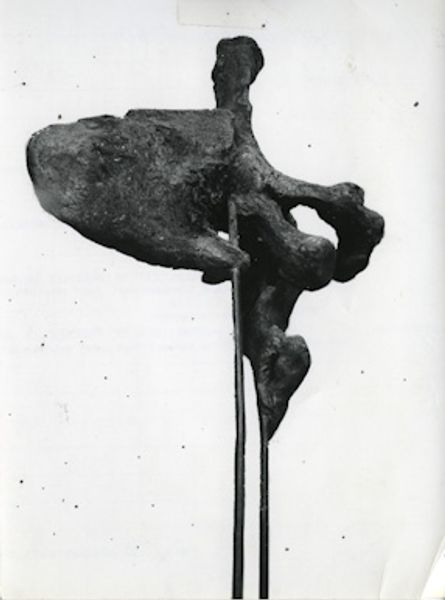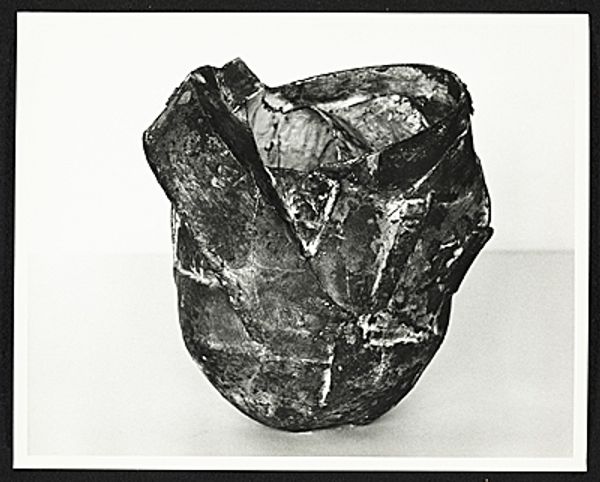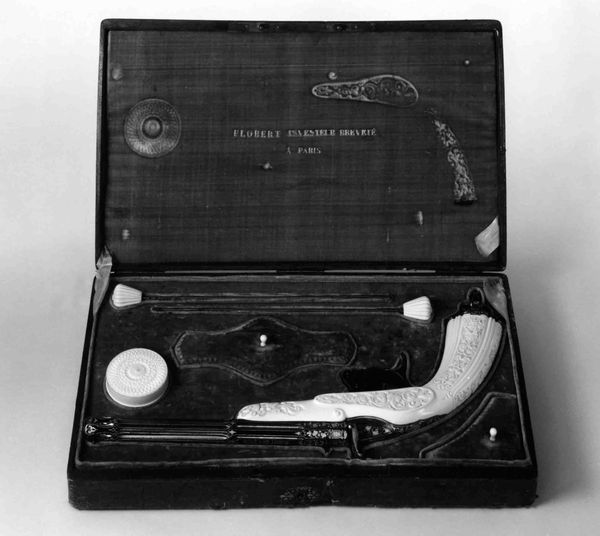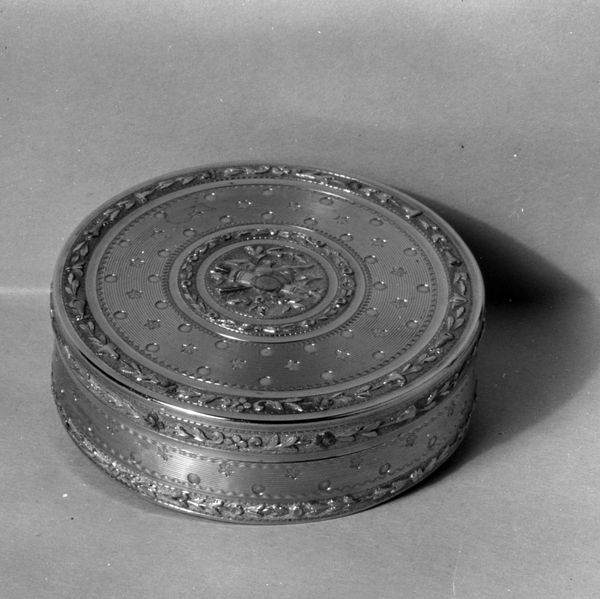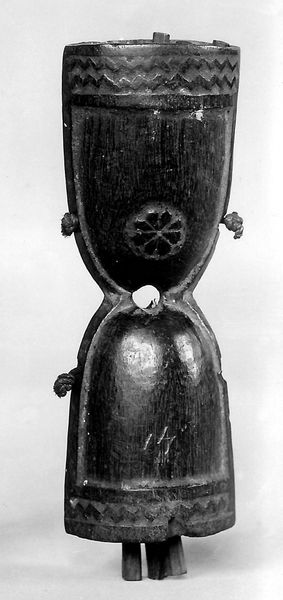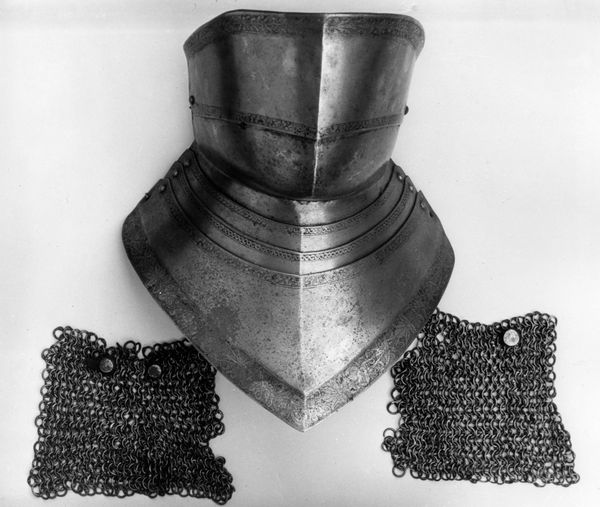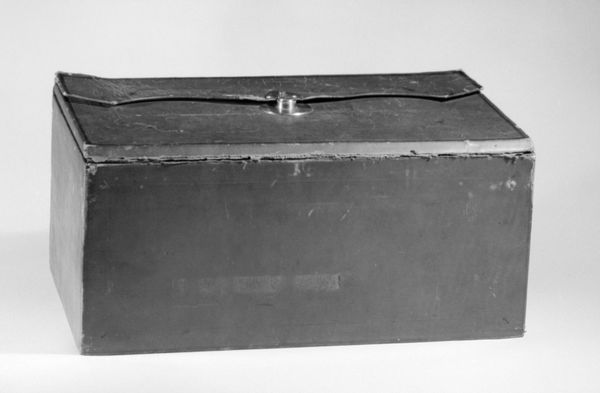
Curator: Today, we are looking at a still life photograph from 1910 simply titled "Photograph" by Thomas Eakins. Editor: My first impression is of textures and stark contrasts, a rather subdued and contemplative composition. It makes me think about the quiet intimacy of the studio. Curator: Indeed. Notice how Eakins meticulously arranges the objects. We see a camera and its accessories, an artist’s palette, all rendered in grayscale. The forms are quite geometric and the details sharp. Observe how the light plays across the surfaces, accentuating the volumes. The image's construction and tone demonstrate careful and intentional control of light and shadow. Editor: Absolutely. Considering Eakins' dedication to realism, I can't help but think about what this photograph communicates about his identity as an artist navigating turn-of-the-century tensions around technology and artistic expression. Here he uses the relatively new medium of photography to portray well-worn instruments of artistic production. I wonder if he considered photography an inherently egalitarian medium as opposed to the elitism associated with classical art training. It also begs the question, can photography ever truly be objective or is every image filtered through the consciousness of the person taking it? Curator: An intriguing point, but also, is he exploring the potential for photography to capture, freeze, and analyze form in ways that inform his painting and sculptural practice? It presents an artistic vision where photography does more than merely represent—it reveals fundamental truths about three-dimensional forms in time and space. Editor: This image then becomes a documentation of a dialogue that asks us to interrogate art-making processes, labor, and what we deem worthy of being elevated as fine art in a world increasingly shaped by technology. It invites us to dismantle assumptions about the inherent superiority of painting over the photographic image, challenging established hierarchies and inviting new perspectives on art's evolving role. Curator: A perspective certainly informed by cultural dynamics of his time. Looking closely at the balance between sharpness and softer areas directs attention and suggests how to prioritize our gaze. There's a structural clarity that allows one to dive deeper. Editor: The interplay between the modern technology of the camera and the enduring artistic symbol of the palette is a complex meditation. I walk away reflecting on how an artwork made over a century ago can speak so compellingly to us today about creation.
Comments
No comments
Be the first to comment and join the conversation on the ultimate creative platform.
